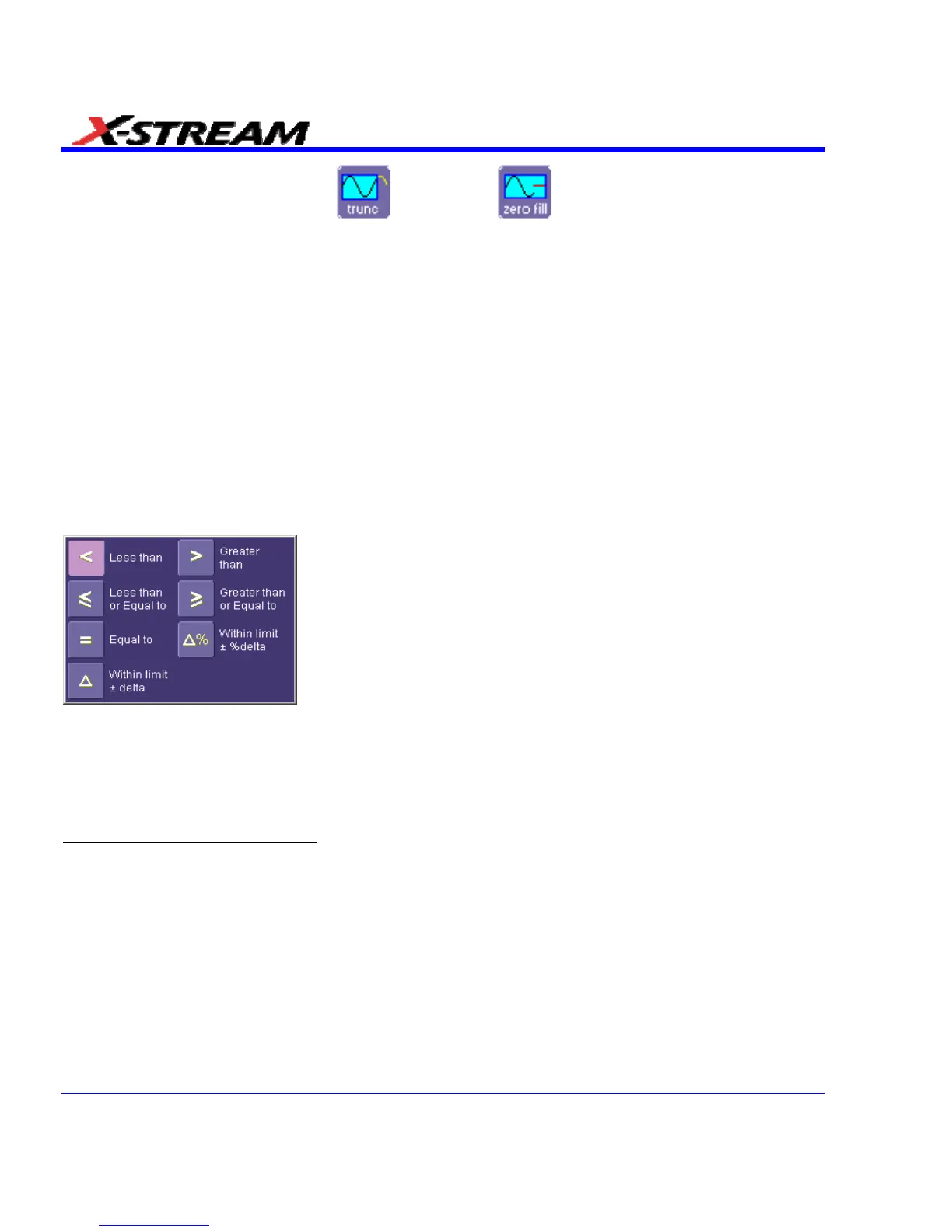7. Choose whether to Truncate
1
or Zero-fill
2
the trace display.
8. Touch the Suppress DC checkbox if you want to make the DC bin go to zero. Otherwise,
leave it unchecked.
9. Touch inside the Output type field, and make a selection from the pop-up menu.
10. Touch inside the Window field, select a window type.
11. Touch inside the Algorithm field and select either Least Prime
3
or Power of 2
4
from the
pop-up menu.
ANALYSIS
Pass/Fail Testing
Comparing Parameters
Each Pass/Fail input (Qx) can compare a different parameter result to a user-defined limit (or
statistical range) under a different condition.
The conditions are represented by these comparison operators:
At the touch of a button, test results can also be compared to these standard statistical limits:
• current mean
• mean + 1 SD
• mean + 3 SD
1
When the FFT transform size does not match the record length, you can truncate the record and perform an FFT on the
shorter record. This will increase the resolution bandwidth.
2
Zero-fill is useful when the source data for the FFT comes from a math operation that shortens the record. This is
commonly encountered in filtering operations like enhanced resolution. The missing data points are replaced by data
values, whose amplitudes are interpolated to fit between the last data point and th first data point in the record. This
guarantees that there is not a first-order discontinuity in the filled data. Since the data at the end of the record is "filled"
data, it is advisable to select a weighting window other than rectangular to minimize the effect of the fill on the resulting
spectrum.
3
The default algorithm is a least primes algorithm that computes FFTs on transform sizes having lengths that can be
expressed as factors of 2
N
*5
K
. This is very compatible with the record lengths encountered in the oscilloscope, which are
often multiples of 1, 2, 4, 5, or 10.
204 SDA-OM-E Rev H
4
The other choice is a power of two algorithm where the record lengths are in the form of 2
N
. The power of 2 algorithm
generally runs faster than the least primes algorithm. The price that is paid is a record length that is not the same as the
acquired signal. The power-of-two FFT uses the first 2
N
points of the record. For example, if you acquire 500 points in
your trace, the power-of-two FFT would only use the first 256 points.

